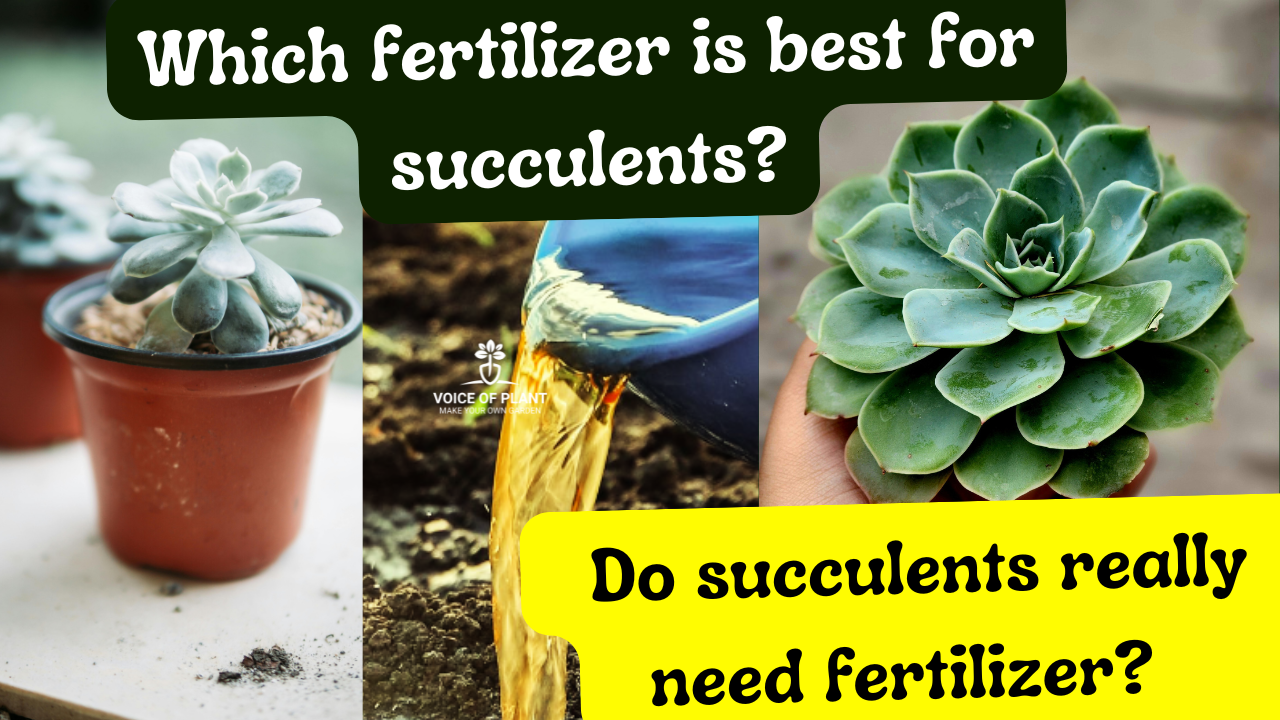Do Succulents Need Any Fertilizer?
Succulents have become a favorite among plant lovers thanks to their stunning appearance and low-maintenance nature. From vibrant Echeverias to hardy Jade plants, these drought-tolerant beauties are famous for thriving even in challenging environments. But while succulents are easy to care for, many enthusiasts wonder, “Do succulents really need fertilizer?” Let’s dig into the science of succulent care to answer this important question.
Do Succulents Need Any Fertilizer?
Succulents are a group of plants that store water in their thick, fleshy leaves, stems, or roots. Popular examples include Crassula Ovata, Echeveria, Aloe Vera, Sedum, and Agave. Their unique ability to retain water allows them to survive in arid climates, making them well-suited for homes, offices, and gardens worldwide.
Unlike many other plants, succulents don’t rely heavily on nutrient-rich soil. Their native habitats are often rocky or sandy, where nutrients are sparse. This is why succulents are hardy and adaptable—but does this mean they don’t need fertilizer? Not necessarily.
Understanding the Nutritional Needs of Succulents
Like all plants, succulents require essential nutrients such as nitrogen, phosphorus, and potassium (NPK). While they can survive with minimal input, providing the right balance of nutrients can enhance their growth, improve their color, and encourage blooming.
Do Succulents Need Fertilizer?
The simple answer is: succulents don’t need fertilizer to survive.
In their natural habitat, succulents rely on whatever minimal nutrients are available. However, when grown in pots or garden settings, fertilizer can help them flourish.
Fertilizer promotes growth, strengthens roots, and can even enhance the vibrancy of succulent leaves. For flowering varieties, like Kalanchoe or Christmas Cactus, fertilizing can lead to more abundant and longer-lasting blooms.
Must read: How to Make Succulents Bushy & Healthy
Adding Compost in Soil is best the options for succulents growth
Compost serves as an organic powerhouse, providing essential nutrients and improving soil quality. Compost is a natural, nutrient-rich material made from decomposed organic matter. While succulents thrive in nutrient-poor environments, adding compost to their soil can significantly enhance their growth and overall health.
While fertilizers can enhance succulent growth, there are alternatives that provide nutrients more naturally:
1. Nutrient-Rich Soil: Using a high-quality succulent or cactus mix can reduce the need for frequent fertilization.
2. Compost: Adding a small amount of compost to the soil provides a steady supply of organic nutrients. You can use cow dung compost or vermicompost for best result.
3. Mulch: A thin layer of organic mulch can help retain soil moisture and slowly release nutrients.
These options are particularly helpful for gardeners who prefer a low-maintenance approach to succulent care.
Homemade Fertilizer Options for Succulents
If you prefer a natural approach, homemade fertilizers can provide your succulents with the nutrients they need. These DIY solutions are affordable, eco-friendly, and easy to prepare. Here are a few popular options:
1. Banana Peel Tea:
-
- Chop up banana peels and soak them in water for a day or two.
- Strain the mixture and use it to water your succulents. The potassium in banana peels can boost plant health and encourage vibrant growth.
2. Eggshell Powder:
-
-
- Crush clean, dry eggshells into a fine powder.
- Sprinkle a small amount around the base of your succulent or mix it into the soil. This adds calcium, which helps strengthen roots and prevents deficiencies.
-
3. Used Coffee Grounds:
-
- Mix used coffee grounds into the soil for a nitrogen boost.
- Use sparingly, as too much acidity can harm succulents.
4. Epsom Salt Solution:
-
-
- Dissolve one teaspoon of Epsom salt in a gallon of water.
- Use the mixture once a month to supply magnesium, which supports chlorophyll production and vibrant foliage.
-
These natural fertilizers are gentle and won’t overwhelm your succulents, making them ideal for occasional use.
Signs of Over-Fertilization
Succulents are sensitive to over-fertilization, which can lead to several problems, including:
- Soft, Mushy Leaves: Excess nutrients can cause leaves to swell and become weak.
- Yellowing or Browning Leaves: High nutrient levels can burn the plant’s roots or leaves.
- Salt Buildup in Soil: Visible crusty deposits on the soil surface indicate over-fertilization.
If you suspect over-fertilization, take immediate action:
- Remove the plant from its pot and rinse the roots with water.
- Repot the succulent in fresh, well-draining soil.
- Water lightly and avoid fertilizing for at least a month to allow the plant to recover.
Also, read: All About Succulents Care
Follow our Social media channel:
1. Voice of Plant – YouTube Channel
2. Voice of Plant Facebook Page
3. Instagram Voice of Plant Channel
Happy Gardening!
